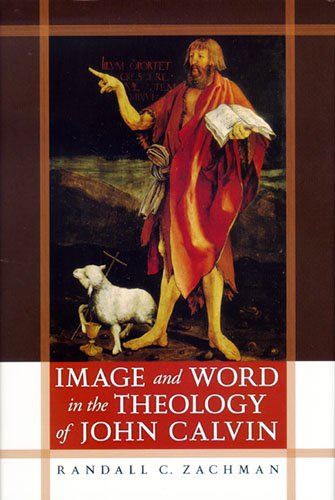The Books of the Bible: A Presentation of Today’s New International Version
Written by International Bible Society Reviewed By Andrew David NaselliHave you ever seen an entire English Bible without any chapter or verse references? I hadn’t until I saw The Books of the Bible. I immediately loved the idea but was simultaneously skeptical about the format’s practicality. For example, how does a preacher or someone at a small group Bible study say, “Look down at verse 6”? The answer is to say something like, “Look at the first sentence in the second paragraph” or “Look at stanza 3, line 4.” This is a bit more cumbersome, but it constantly reminds one of the context even when highlighting a small piece of it. The group that designed The Books of the Bible argues, “The dubious benefit of allowing passages to be located quickly does not outweigh the negative factors that chapters and verses introduce to Bible reading” (p. v). Beyond using The Books of the Bible at a small group or while listening to a sermon, it is ideal for reading through large sections of the Bible. (See also my review below in this Themeliosissue of Christopher R. Smith, The Beauty Behind the Mask, which explains the philosophical foundation of The Books of the Bible.)
The text is the readable Today’s New International Version (for which the International Bible Society is the translation sponsor and copyright holder). One’s first impression when flipping through the volume will likely be what is absent: section headings, chapter references, verse references, footnotes, cross references—everything except the text. It looks remarkably like a normal book, albeit one with an unusually diverse assortment of genres. A closer look reveals strategically placed white spaces of differing sizes throughout the volume; gaps between the text are the only section indicators—the larger the gap, the larger the section break. As one continues to flip around, confusion may arise regarding the unconventional order of the books, causing one to turn to the preface for an explanation—not unlike a lost man finally stopping for directions. The preface (pp. iv–vi) explains that the volume “draws on the fundamental insight that visual presentation can be a crucial aid to right reading, good understanding and a better engagement with the Bible.” The preface names six specific ways that The Books of the Bible “differs from the most common current format”:
- “Chapter and verse numbers have been removed from the text.” The bottom of each page, however, inconspicuously lists a chapter-and-verse range in a faded gray font. Our present chapter and verse divisions were added around 1200 and 1550 respectively, and they impose “a foreign structure” that actually obscures the text, suggesting that it is “a giant reference book.” Not only are the chapter and verse divisions artificial; they are often inaccurate.
- “The books are presented according to the internal [literary] divisions that we believe their authors have indicated.” The introduction to each book explains the major divisions. This format imposes an interpretive structure on the text (e.g., section and paragraph breaks), but all typography does that to some degree. This genius of this format is its literary sensitivity, which communicates more accurately than traditional chapter and verse divisions.
- “A single-column setting is used to present the text more clearly and naturally, and to avoid disrupting the intended line breaks in poetic sections.”
- “Footnotes, section headings and other supplementary materials have been removed from the pages of the sacred text.” The TNIV translators’ notes, however, are available as endnotes after each book.
- “Individual books that later translation divided into two or more books are made whole again.” For example, Samuel-Kings and Luke-Acts are single books.
- “The books that have been placed in an order that we hope will help readers understand them better.” The criteria for the ordering is literary genre, historical circumstance (e.g., Paul’s letters are listed chronologically), and theological tradition, but the result is rather awkward and confusing for people accustomed to the current order. Cf. the order of the NT books: Luke–Acts, 1-2 Thess, 1-2 Cor, Gal, Rom, Col, Eph, Phlm, Phil, 1 Tim, Titus, 2 Tim, Matt, Heb, Jas, Mark, 1-2 Pet, Jude, John, 1–3 John, Rev. The book order is probably the most revisable aspect of the format.
The Books of the Bible is ingenious. The way it presents the Bible as a library of literature is unique, simple, and elegant, and it naturally encourages better Bible reading. Perhaps some other translations like the ESV and NLT will follow suit.
Andrew David Naselli
Andy Naselli is assistant professor of New Testament and Biblical Theology at Bethlehem College and Seminary in Minneapolis and administrator of Themelios.
Other Articles in this Issue
Why are we talking about preaching with power? Because of what Christianity is...
In the mid-twentieth century, one could readily find informed Protestant observers acknowledging the Calvinist tradition’s major missionary contribution...
The summer of 2007 was the wettest in Britain since records began, registering over twice the usual amount of rainfall between May and July...
How Far Beyond Chicago? Assessing Recent Attempts to Reframe the Inerrancy Debate
by Jason S. SextonThe doctrine of inerrancy has been a watershed issue among evangelicals in the West, perhaps now more evident than ever...
Quite apart from commentaries and hermeneutical textbooks, books on the Bible—its nature and ultimately its authority—have been appearing with daunting frequency of late







